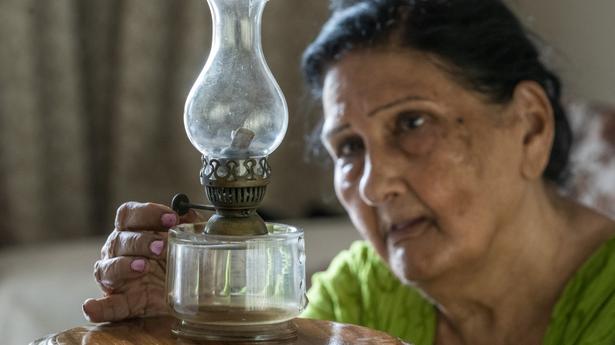
Pieces of Partition: Documentiong the world’s largest migration through objects
The Hindu
Refugee families and independent groups are preserving the memories of Partition with priceless objects brought from across the India-Pakistan border in 1947
My first memory of the 1947 Partition is a borrowed one, of a James Hinks and Son oil lamp that sits next to my grandfather’s unframed, monochromatic photograph (dated September 3, 1933) with Thakar & Co, Karachi engraved on it. My grandmother, or biji as we called her, would always begin her Partition story with the lamp’s missing handle, which broke accidently on the day she left Karachi with her husband and a five-year-old daughter. She was six months pregnant then.
In great detail, she would explain how she hurriedly packed all her belongings in a trunk and took the lamp along when my grandfather’s friend and colleague at the Royal Air Force cautioned them about the possibility of riots spreading to Karachi. “It was a timely escape. The situation in Karachi worsened after we’d left,” she said, blessing and thanking the Muslim man who guarded them, along with two Sikh and Hindu families, through their journey to the port.
The lamp was a symbol of hope and resilience, but the Partition wasn’t. “Wealth can be made again, but the dead cannot be brought back,” she said, talking about the dear ones she had lost.
Relics from the largest migration in the history of mankind — ranging from jewellery, phulkari and watches to furniture, letters and utensils — carry the weight of 15 million refugees who survived chaos and separation. These objects are now being documented by the Punjab Digital Library (PDL), Partition Museum of Amritsar, and the digital Museum of Material Memory (MMM).
PDL has digitised over 17,600 letters and postcards sent to officers of the East Punjab Liaison Agency. In one letter, Lakshman Singh of Nankana Sahib asked Wazir Sahib of Gurudwara Shri Dukhniwaran Sahib, Patiala, for help, stating that 400-500 villages in Lyallpur had been surrounded by mobs.
Letters and postcards sent in search and evacuation of separated brothers, mothers, fathers, sisters and daughters form another heavy chunk of the liaison agency’s records.
“It took seven years to digitise these records from the Punjab State Archive Department. No one has accessed these records before,” says Davinder. “ To tell our stories, we must save tangible memory. Technology can’t preserve deep memory. It can only be transferred to next generations through these objects. The way we remember decides the way we react. Material objects are one of the best ways to transfer memories to the next generation,” he adds.

In a study published in the journal Mammalian Biology on December 23, 2024, researchers compared the calls of Asian elephants based on their age, sex, and behaviour. They found the duration of trumpets remained fairly consistent across all age classes for both male and female Asian elephants but roars and roar-rumbles got longer with age.












